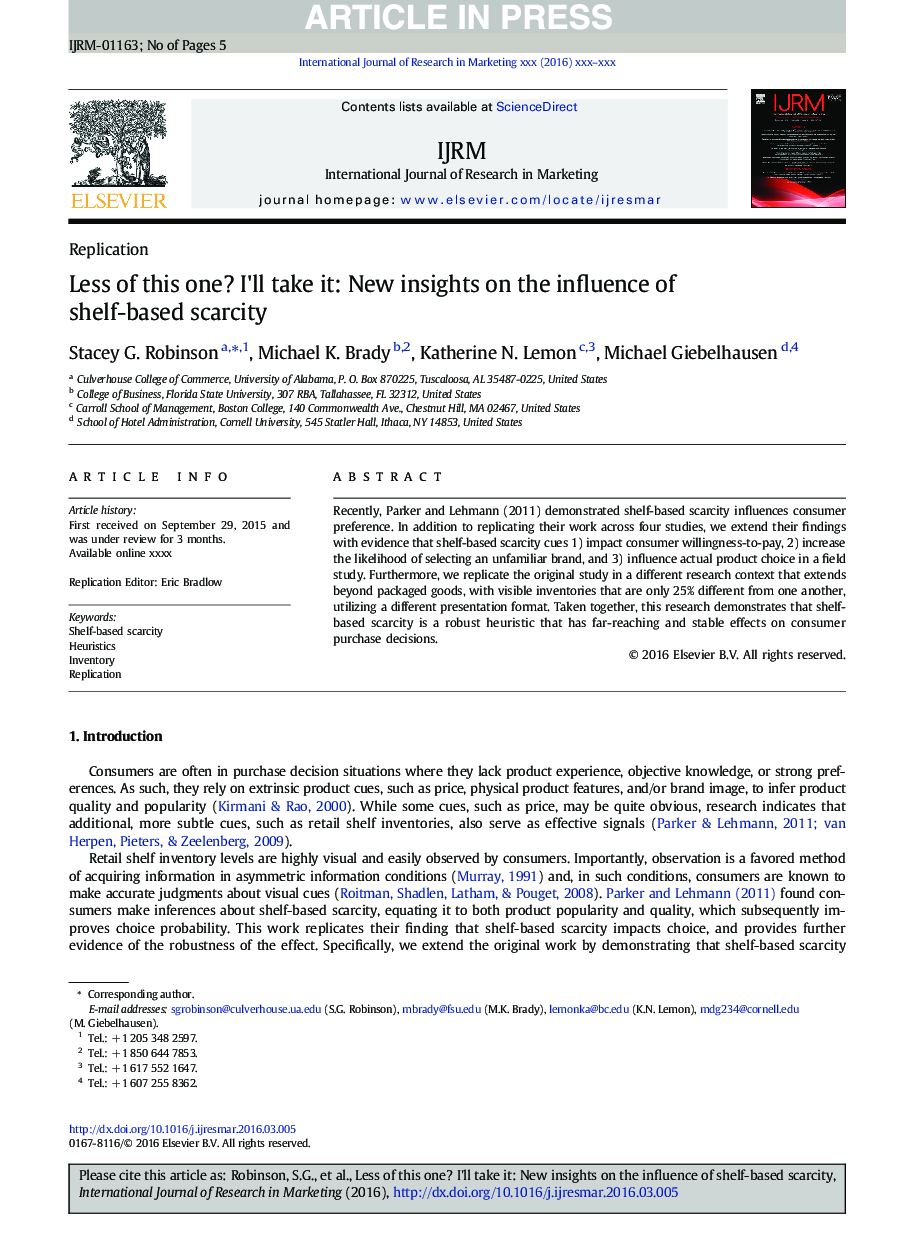| Article ID | Journal | Published Year | Pages | File Type |
|---|---|---|---|---|
| 5033777 | International Journal of Research in Marketing | 2016 | 5 Pages |
Abstract
Recently, Parker and Lehmann (2011) demonstrated shelf-based scarcity influences consumer preference. In addition to replicating their work across four studies, we extend their findings with evidence that shelf-based scarcity cues 1) impact consumer willingness-to-pay, 2) increase the likelihood of selecting an unfamiliar brand, and 3) influence actual product choice in a field study. Furthermore, we replicate the original study in a different research context that extends beyond packaged goods, with visible inventories that are only 25% different from one another, utilizing a different presentation format. Taken together, this research demonstrates that shelf-based scarcity is a robust heuristic that has far-reaching and stable effects on consumer purchase decisions.
Keywords
Related Topics
Social Sciences and Humanities
Business, Management and Accounting
Marketing
Authors
Stacey G. Robinson, Michael K. Brady, Katherine N. Lemon, Michael Giebelhausen,
